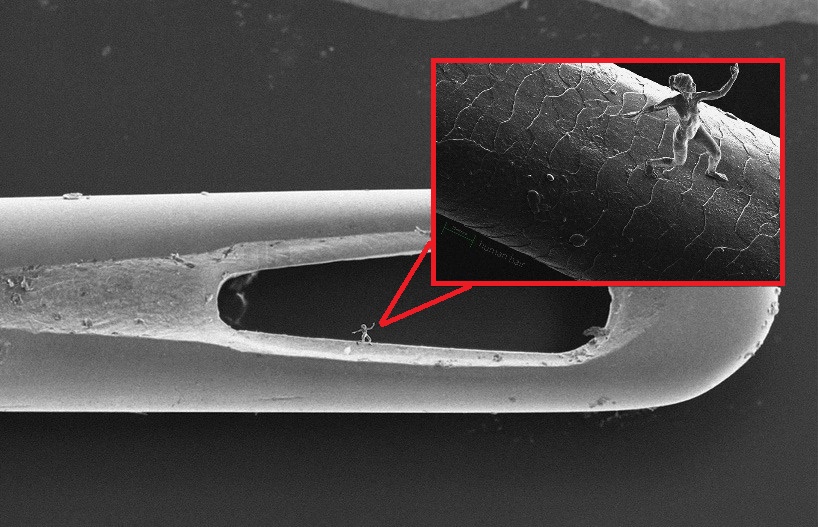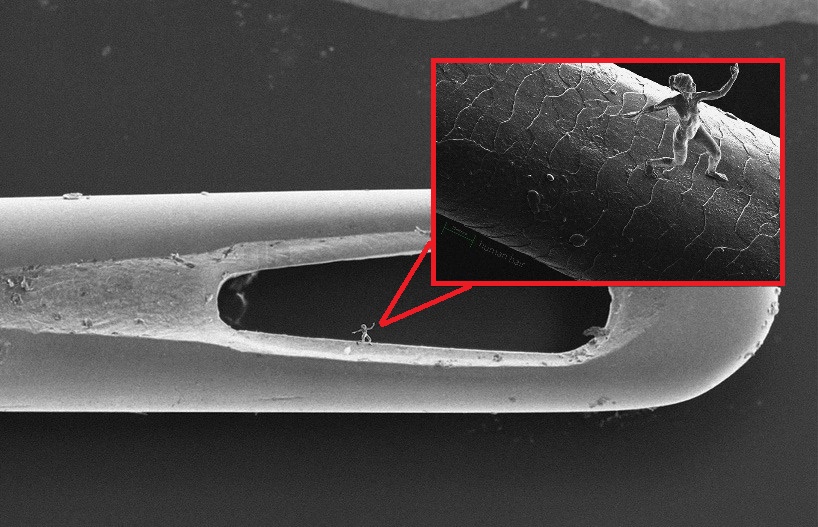

We’ve seen some absolutely amazing art over the past 6,000 years of human history, and, more recently, we’ve seen some incredible creations that were made using 3D printing and imaging techniques. But now it’s clear — some of the most impressive art is something we will never see. At least not with the naked eye. Or even a jeweler’s scope, or a microscope that can magnify 400x.
Artist Jonty Hurwitz has created the world’s smallest sculptures: nanosculptures, created using a 3D printed photosensitive material, so small they can fit on the head of an ant, in the eye of a needle, on a human hair — so small they look like no more than a mote of dust hanging in a ray of sunlight. The largest of his sculptures is about the width of a human hair; the smallest is less than half that width.
The structure is created using a ground-breaking new 3D printing technology and a technique called Multiphoton Lithography. Ultimately, these works are created using the physical phenomenon of two photon absorption. Art, literally created with Quantum Physics.
If you illuminate a light-sensitive polymer with Ultra Violet wavelengths, it solidifies wherever it was irradiated in a kind of crude lump. Some of you may have experienced a polymer like this first hand at the dentist when your filling is glued in with a UV light.
If however you use longer wavelength intense light, and focus it tightly through a microscope, something wonderful happens: at the focus point, the polymer absorbs TWO PHOTONS and responds as if it had been illuminated by UV light, namely it will solidify. This two photon absorption occurs only at the tiny focal point – basically a tiny 3D pixel (called a Voxel). The sculpture is then moved along fractionally by a computer controlled process and the next pixel is created. Slowly, over hours and hours the entire nano-sculpture is assembled pixel by pixel and layer by layer.
Read more at the artist’s page.
WATCH: Making Nanoart
